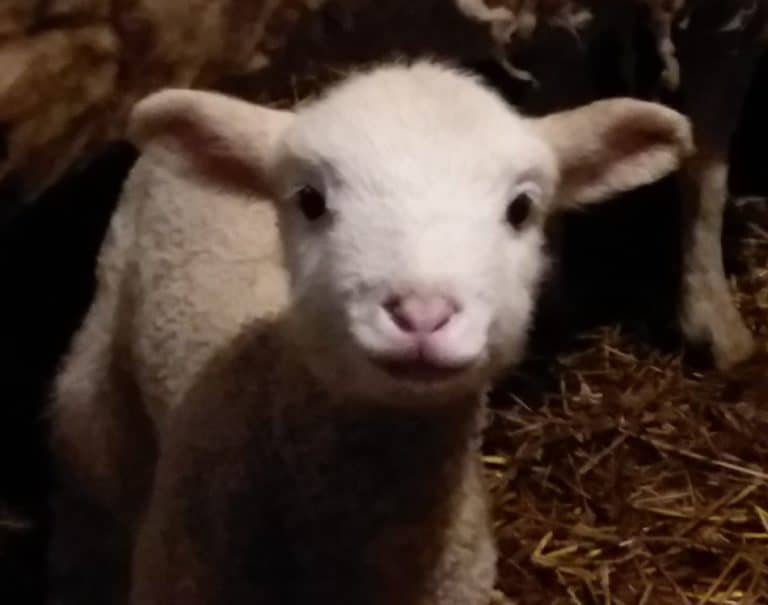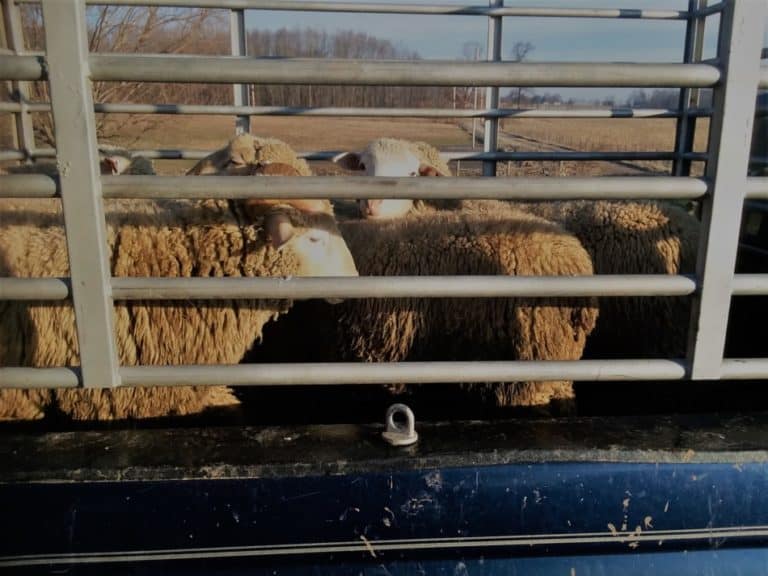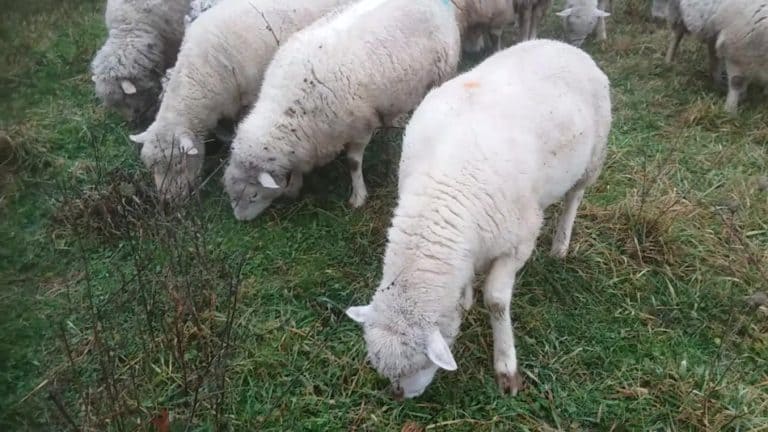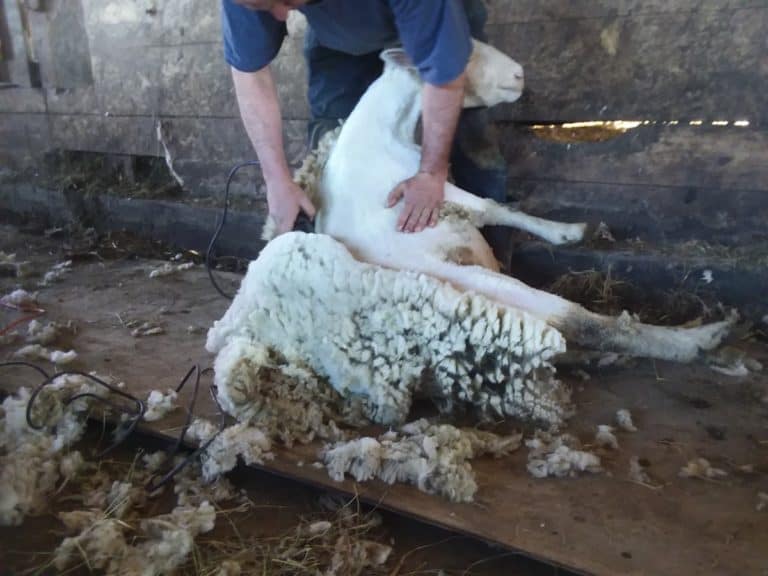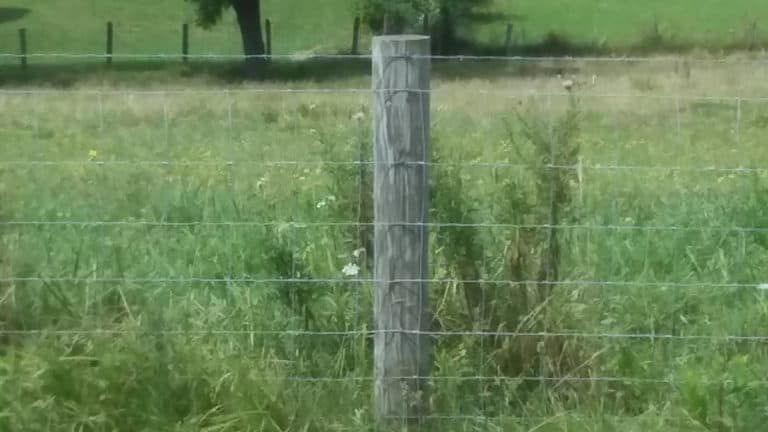Where To Sell Your Wool: Options For New Sheep Owners
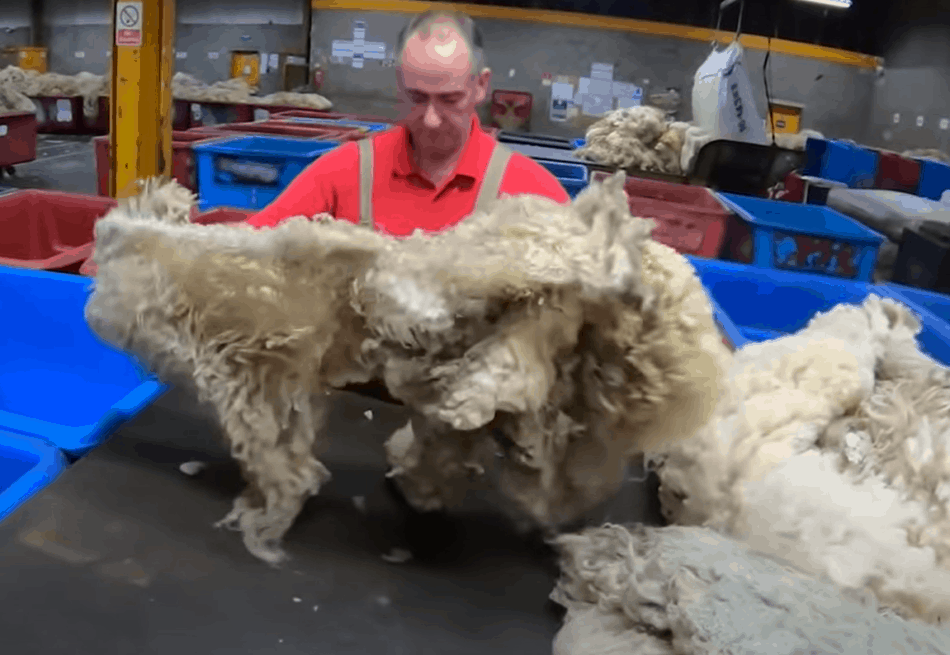
Let me be upfront with you on commercial wool price-it’s low. If you are thinking to make money selling the wool commercially, think again.
However, making money on wool is possible for those involved in private or specialty wool sales.
There are two options for selling your wool: to sell it commercially in large amounts for a set price (usually low set price) or to sell it privately by the fleece or partial fleece.
If you have the wool to sell, what are your best options?
Raising Sheep For Profit is an article I wrote going over the budget and selling options for raising commercial sheep, including seasonality of lamb prices.
Selling commodity wool
Commodity wool, just normal, everyday wool does not make money. Paying for the sheep to be shorn will cost more than the price of the wool for that sheep.
Some wools are worth more than average, like white fine wool, and some worth nearly nothing. very long staple lengths or lots of kemp (black fibers that are not wool).
The worth is determined by the fineness or thickness of the diameter of wool fiber and the current demand for that type of wool for manufacturing purposes.
| Selling commercial wool average priced years | $0.10-0.20 per pound |
| Selling commercial wool 2021 low price average for our wool | $0.05 per pound |
| Selling commercial wool 2018 high average price for our wool | $0.34 |
| Specialty wools privately selling fleeces | $20-75+ per fleece |
What determines wool price?
The wool price is based on three things: the grade of wool you have to sell, the condition of the wool and the demand for that wool in the current year.
1. The grade or fineness of the wool
The grade of the wool is based upon the fineness of the diameter of the individual fibers and is measured in microns.
Wool is generally divided into three main grades- fine, medium or coarse. Each sheep breed will tend to fall into a particular category.
For instance: Merinos and Rambouillet would produce fine wool. Most of the large flocks of range ewes in the U.S. would be fine wool producers.
Commercial cross ewes in more moderately sized to small size flocks would probably be in the medium wool category. Of course, it depends upon breed, but medium is a good guess.

2. The condition of the wool
The value of the wool is determined by the microns first and foremost, but also by the overall condition of the fleece.
For the wool to be usable, the fibers have to be strong along the entire length.
A break in the middle of the fiber, due to illness or severe stress on the sheep, will make the wool less valuable for the end user, so you will be paid less.
Through the processing of the wool the dirt will be combed or washed out, so it was paid for, yet got thrown out. It only makes sense that will come out of your price as well.
3. The demand for this wool this year
The wool buyers that you are selling your wool to are reselling the wool to manufacturers.
This means that when an order comes in for a certain type of wool then it will raise the price of that wool.
The catch here is that you don’t know what the manufacturing needs will be this year and your sheep will only produce the type of wool her genetics allow.
She can’t change her wool fiber structure to suit you or the manufacturers needs. This one is completely out of your control.
Overall, fine wools sell for more money than other grades, if you are selling your wool commercially.
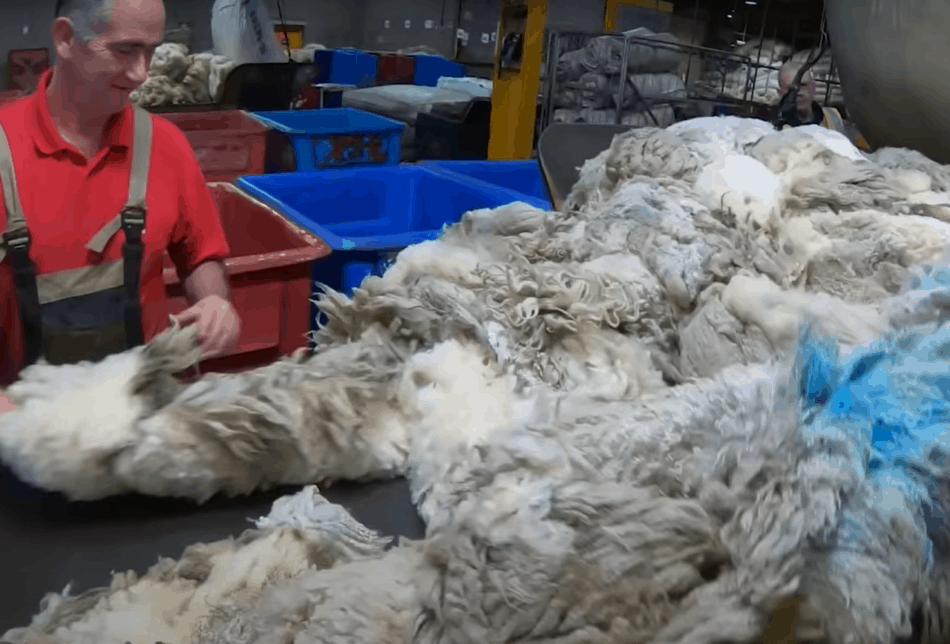
What is the wool price?
We just sold the last of our wool for the year and got $0.10 per pound.
A few months ago we took the wool from the main shearing in the spring and got $0.20 per pound.
The price last year for the same wool was also $0.20 per pound.
There are articles available siting a commercial wool price of $1.40 or so, which was the case when the article was written, but has not been the case for quite some time.
Last year our average price was $0.34 per pound. This year it will be less than $0.20 per pound.
Update for 2021: we sold the last of our wool this fall and the price was $0.05 per pound. Yikes! The price has been low like this for the past two years.
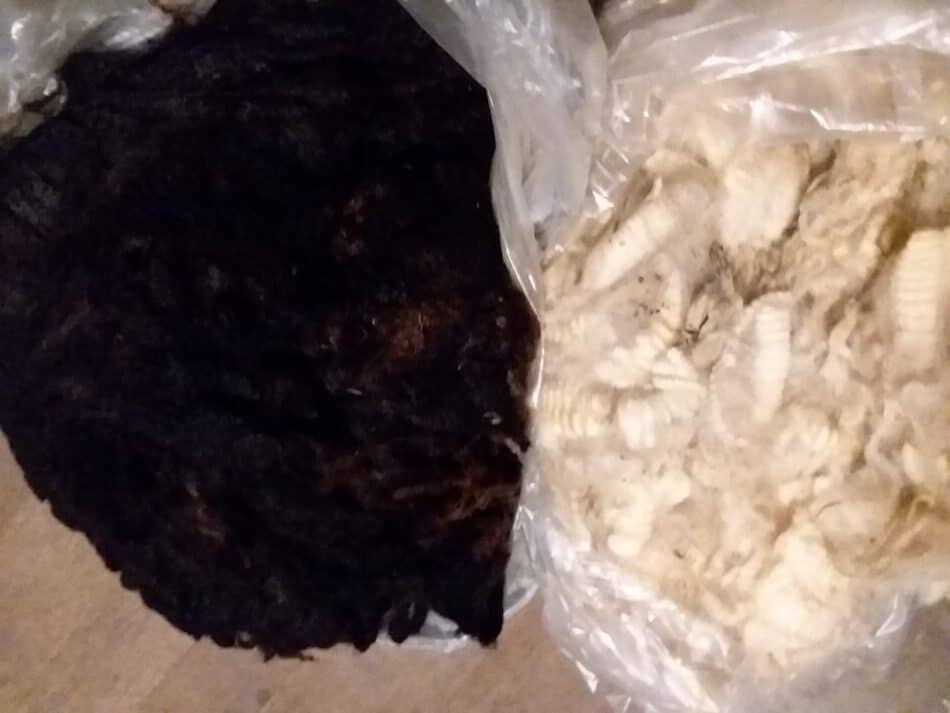
Where to sell your wool
Wool buyer
We went to a wool buyer that pays a set price per pound no matter what type of wool you have to sell.
His place is the closest wool buyer to us and he pays with a check when you drop off the wool. If you are looking for a wool buyer in the U.S., try Groenewold Fur & Wool. They have a shearer list, too.
We have medium grade commercial crossbred ewes. This is the most common wool produced in this part of the country, so our wool price is not great.
Mid States Wool Cooperative-closing in May 2023
Update-When I wrote this article, Mid States was still taking wool, but as of May 2023 they will no longer take in wool, so this option is out unless you get there quickly.
I kept this section of the article in, since it gives you an idea of how wool was priced, but it no longer applies since this business is closing.
If we had all fine wool it would pay to go to the wool cooperative that sorts the fleeces individually and pays by the grades. So, if you had a fine wool sheep, take it to somewhere that pays for the finer grade!
In our area Mid States Wool Cooperative pays the best prices for commercial wool, especially if you have the wools that are in higher demand like the fine wools.
The only downside of the wool cooperative is they pay once a year.
They pay noticeably more overall and pay more for individual fleeces that are better than the rest of your fleeces, but you do have to wait for the money.
Last year we took a load of wool to Mid States and got an average of $0.34 per pound. The actual prices per pound varied anywhere from $0.07-0.77 per pound.
We didn’t have much of the low price wool and we didn’t have much of the highest price category either! If I remember correctly the most pounds were in the $0.35 category.
For us the best pay is the co-op, which is further away and pays once per year. The wool buyer is closer, pays less but pays the day you take the wool.
Update: wool prices have tanked since I wrote this, they are super low now. So low that no one will call us back to arrange to buy the wool, it will be headed out to the fields if we don’t get someone calling pretty soon!
Paying the shearer
We (by that I mean my husband) shear our own sheep, so we have the wool to sell as well.
Don’t get too excited about it, the wool does not cover the cost of his time or blades. However, this is an important point to mention when you are paying to have your sheep shorn.
Around here shearing sheep costs between $3-5 per head with the shearer keeping the wool.
Even if your sheep have 10 pounds of wool each, at the prices we just got for our wool that would only be $1.00 per sheep when the wool is sold.
Update for 2021: we hired a shearer, got all the sheep done in two days and it cost us a set up fee of $80 plus $5.00 per head. These costs are based on having 200+ to shear. Smaller flocks will cost more per sheep.
Costs of shearing sheep
Another cost to consider is that your shearer must have one complete set of blades that cost about $30 for every 5-10 sheep. The number of sheep shorn per set of blades depends upon the wool type and dirt content.
After the blades start to dull, they must be switched out for another set. None of these can be reused until they are sharpened, which also costs money.
Once you start doing some math here it becomes clear that the shearer is not ripping you off charging $5.00 or more per sheep. Actually, when you consider the time involved in being at your farm, that’s not enough pay.
I want to keep some of the wool
If you want to keep your wool, just tell the shearer. I’m sure selling the wool was factored into his price, so you just need to pay him what he would have gotten from the wool buyer.
Keeping your own wool is great! I get a kick out of experimenting with ours.
Let the shearer know ahead of time about your plans. He can help you get an easier to use fleece by taking extra precautions to keep out floor dirt and going a touch slower to avoid second cuts.
Be sure to have a bag ready, I use clear garbage/recycling bags. Don’t set the fleece down on the floor, you’ll pick up more dirt and hay pieces.
Specialty wool sales
With the ease of shipping and everyone having internet access, specialty wool sales are a great opportunity open to all.
Fiber artists want all types of wool, in all colors and textures for their projects. Even normal, nothing special, wool from mix breed sheep has special characteristics making it ideal for a certain use.
You’ll need to know what you have and what your wool does best, then advertise. There is a fiber enthusiast searching for it, all you have to do is look.
I find the variety of wool available and the multitude of breeds of fiber animals to be fascinating. There truly is a wool for every fiber need.
Experiment with your wool to discover it’s characteristics. Take some to your crafty friends see what they can do. Contact the local spinning and weaving guild and see what they think.
Once you know the abilities of your wool, now you can find the buyers who are looking for exactly what you have. Sincerely, every breed and every wool has raving fans, you just need to get the word out.
Here is a great chart I made on different sheep breeds and the uses of their wool. Sheep Breeds For Handspinning Check it out, there’s over 100 breeds!
I spin our wool and occasionally buy a fleece. I love medium wool that it easy to spin and felts well.
I’ve tried fine wools and have a hard time with them. This is something I need to work on, because I love the feel and colors available in fine and extra fine wools.
So, why am I telling you this? To illustrate that not all potential buyers of wool want the same things. If you want to sell wool privately, take some pictures and put the word out.
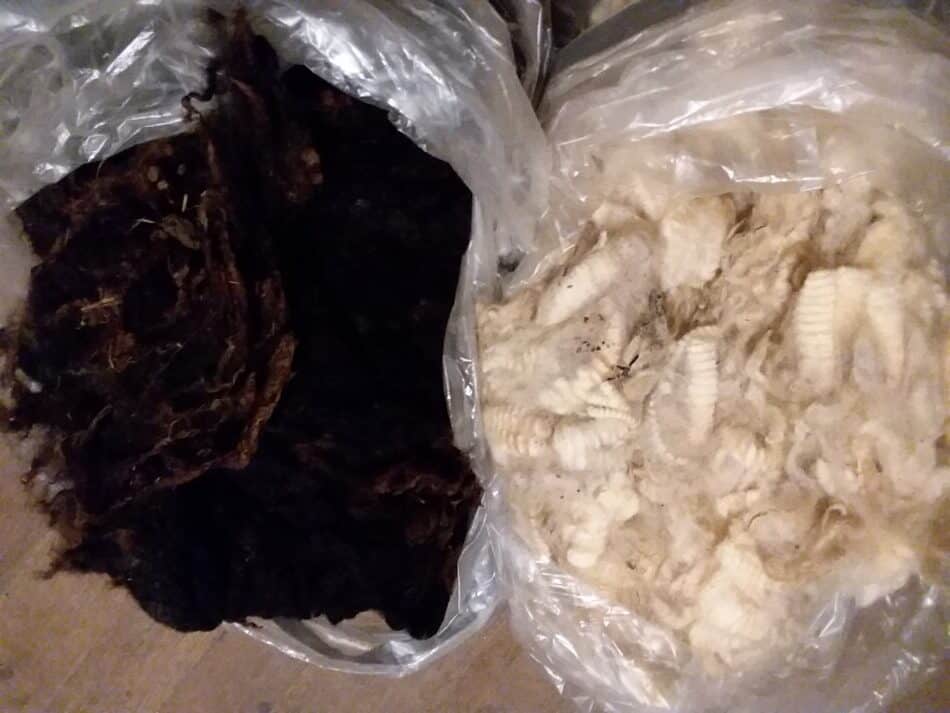
Prices of specialty wool
A big reason specialty wool is so attractive is the pay, especially compared to commercial wool prices!
Think about it-I routinely see fleeces for sale online that are $50-75 each. That’s for raw (unwashed) wool! If you were looking into a rare breed or a high demand awesome natural color this price is low!
Once again using this year’s sad wool price any fleece sold to the wool buyer would bring at the most $1.50 with $1.00 being a generous average.
Compare that to $50 per fleece to hand crafters! It’s 50 times as much money!
My most recent wool purchase was a dark Shetland fleece for $20. I’m thrilled with the way the wool performs for me and the things I can do with it!
Circling back to the main point here, that is $4-5 per pound of raw wool! This fleece was at a local event and was definitely on the less expensive end of the choices.
A more typical price would have been $45 for the fleece at this event and people were definitely buying.
While, it’s true there is additional work involved in selling specialty fleeces and the sheep must be taken care of in a way that keeps the fleece in top condition, that is a huge income potential.
If you are thinking of getting into fleeces ask around and find someone who will help you out, ideally the person you bought your sheep from. They know the tricks to make private wool sales work.
Selling specialty fleeces is not easy money! There is work and some management involved.
If you are willing to do the work and are really enthusiastic about wool, give it a look. Selling high quality specialty wool could be a nice little side income for you.
Wool buyers don’t want specialty wool
A word of caution is needed here: the regular wool buyers do not want anything other than fine or medium white wool. I’m not sure about coarse wool.
All of the unusual or specialty breed wools will not be something that the wool buyers want to have. If they do take it, it will certainly not be for anything other than rock bottom price.
To get the prices you want form specialty wools, you must privately sell your fleeces.
Value added wool items
There are many talented people who choose to sell their wool as value added items like yarn, socks, felted hats, quilt batting, and just about anything else you can think of. Some items are ready to wear or use like socks or a hat.
Other items are processed (washed, combed or carded) and ready to be spun or felted, like roving.
The hard part of wool preparation, removing the grease and dirt and carding the fiber, was already done for the customer making the original wool more valuable to the fiber enthusiast.
Considering getting some of your wool washed and processed for you? Look at Zeilinger Wool Company for ideas and pricing.
Consumers are becoming more aware of where their home furnishings and clothing come from and what they are made of. This is great for anyone interested in learning to do more with their own wool.
If you have a knack for making something awesome out of wool, consider selling your items online. Many fiber artists have their own websites and sell on sites like Etsy.
By the way, direct selling finished items can be done with all classes and/or grades of wool. Of course not all types of wool can do a great job making all types of handmade items.
However, every type of wool has characteristics that make it wonderful for something! The something just depends upon the type of wool.
